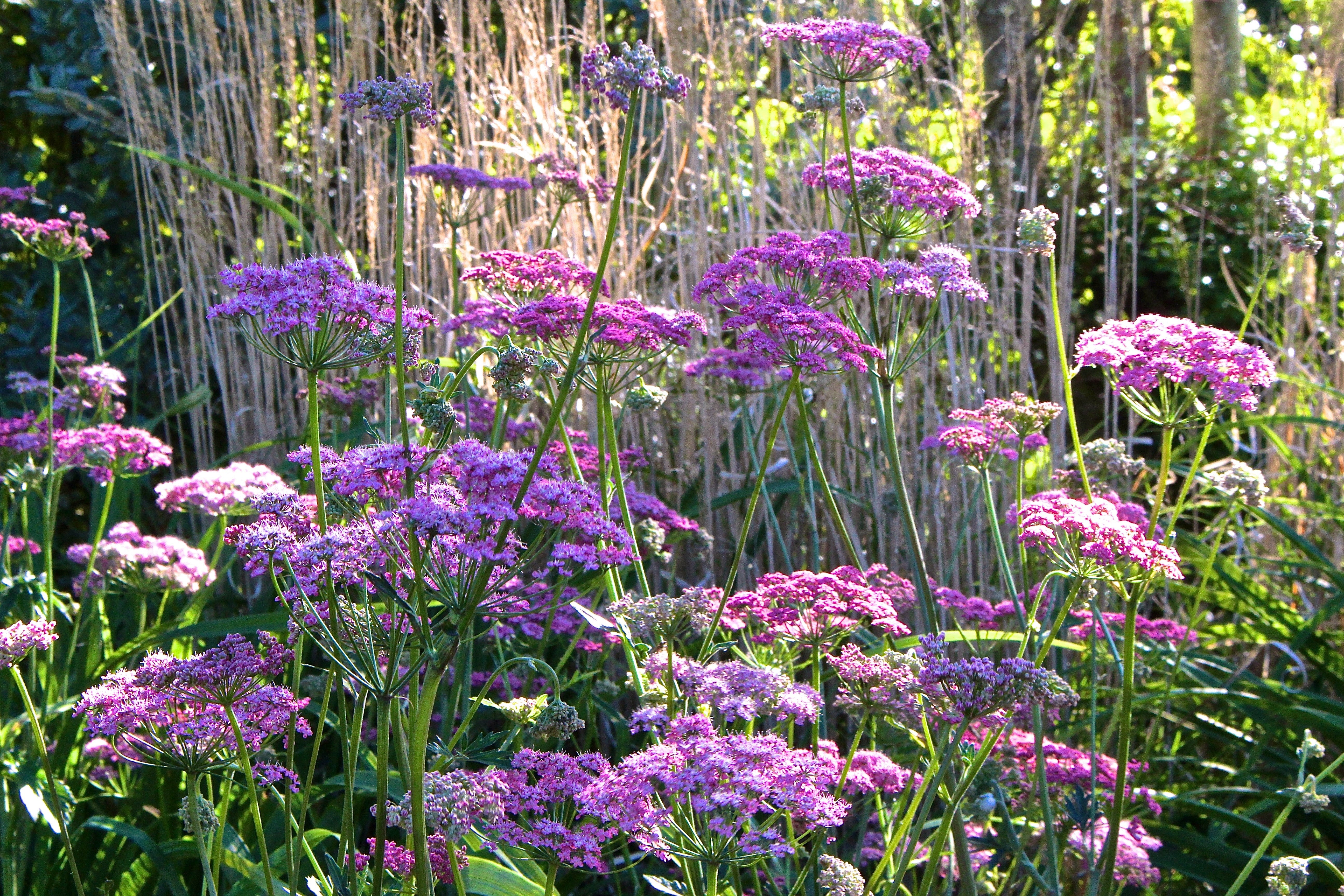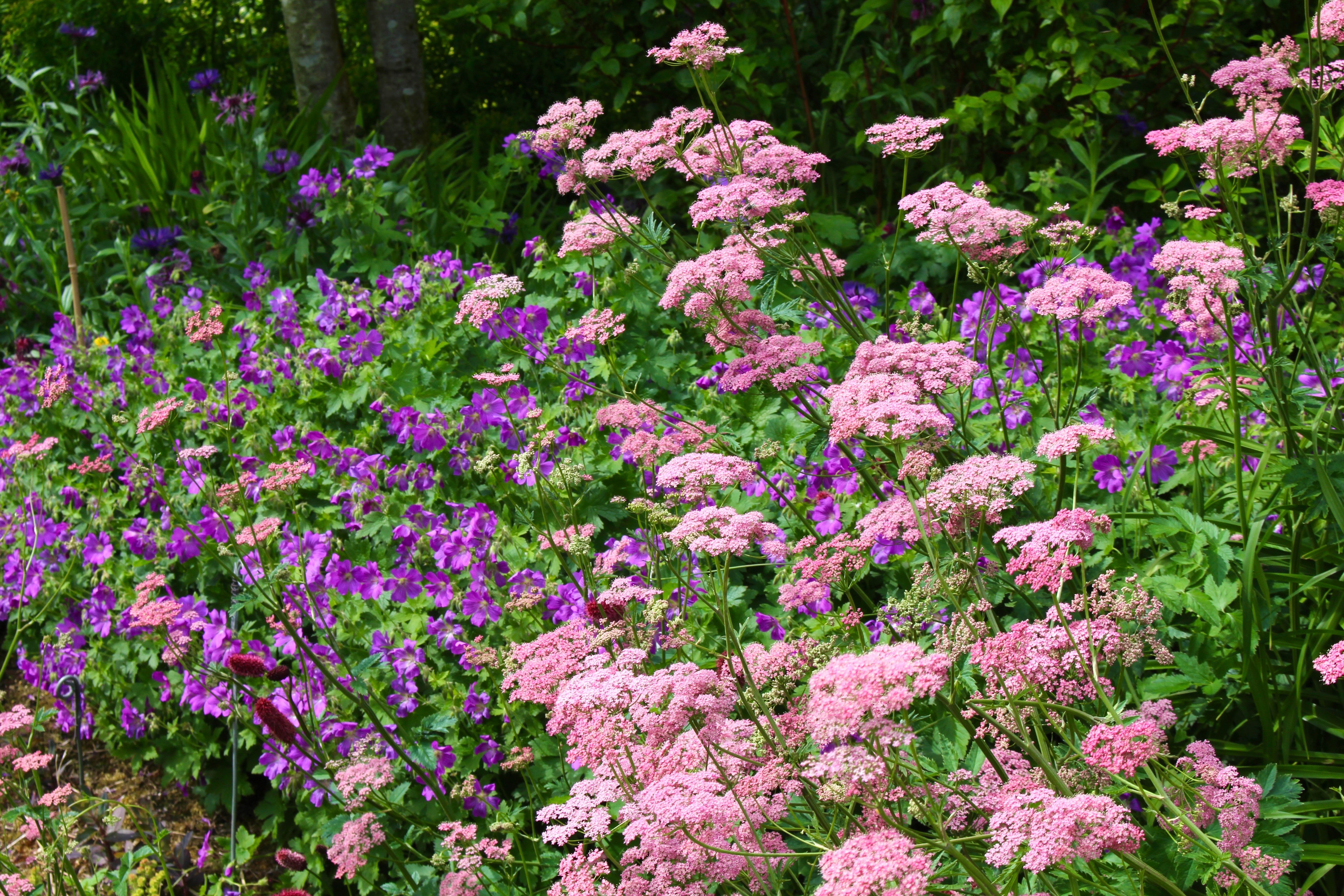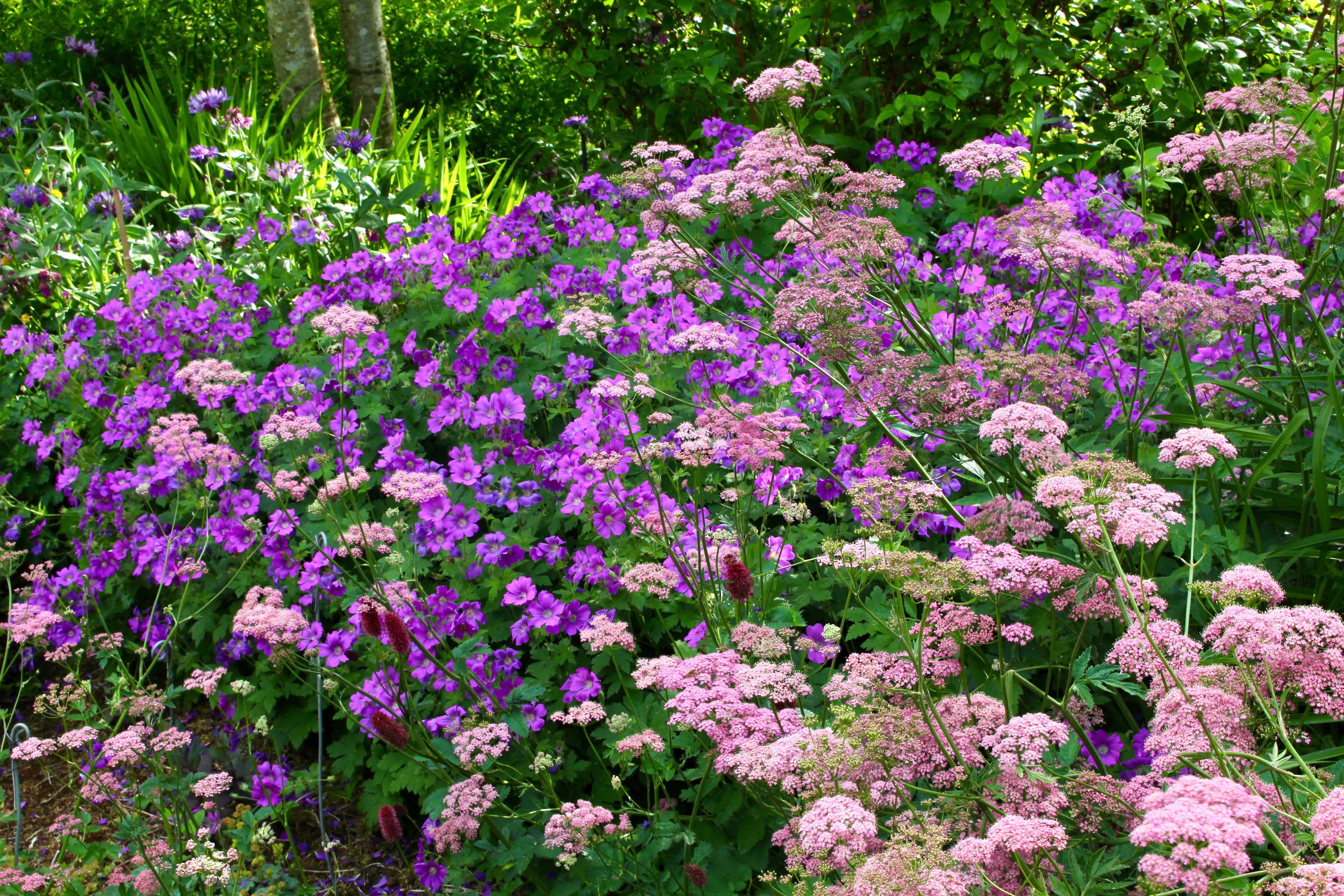Pimpinella major 'Rosea'
Approx. 0.5 litre pot
About this cultivar:
Pimpinella major 'Rosea' is like a perennial pink cow parsley. Easy to grow (especially in most conditions) and hardy, this is a great plant for any border. However we tend to use it in more naturalistic plant schemes since it is a cow-parsley look-a-like. Love this one!
- Position: Full sun, partial shade
- Soil: Almost any soil, grows well in Ballyrobert
- Flowers: June, July, August
- Other features: Grows well in Ballyrobert
- Hardiness: Fully hardy - grows well in Ballyrobert! H7 - Hardy in the severest European continental climates (< -20°C)
- Habit: Clump forming, bushy
- Foliage: Deciduous
- Height: 60 - 120 cm (2 - 4 ft)
- Spread: 60 - 90 cm (2 - 3 ft)
- Time to full growth: 2 to 5 years
- Plant type: Herbaceous Perennial
- Colour: Green, pink
- Goes well with: Try it with Iris, Hosta, Campanula, Matteuccia, Rosa, Gunnera, Euphorbia, or large Geraniums. Or hedges (honestly).
About this genus:
Pimpinella is a large plant genus in the carrot family (Apiaceae) with over 40 species described. Usually perennial, rarely biennial or annual. It includes the aromatic herb anise (P. anisum) and the Brisih native Burnet-Saxifrage (Pimpinella saxifraga) which was described by John Gerards in his 1597 ‘Herball’ or ‘Generall Historie of Plantes’.
In the garden, we are most likely talking about Pimpinella major. Commonly called greater burnet or greater burnet saxifrage, it is a clump-forming perennial that resembles Cow Parsley with its umbels of flowers and lacy foliage. Tiny flowers (usually white) bloom in summer in large, flat, terminal compound umbels atop upright stems. Pinnately compound, basal leaves are medium green. Sometimes confused with Chaerophyllum, Pimpinella rosettes are more tightly rosette forming and has glossy, rather than hairy, leaves.
Native to meadows, grasslands and scrub areas in Europe. We find it prefers moist conditions, but grows in almost any soils and in full sun to part shade - it does great for us in our garden
In the garden its attractive, airy, clusters containing hundreds of tiny little flowers in shades of white, or pink attract many butterflies and insects. Since it is reminiscent of wild cow parsley this plant can be useful when naturalizing a border. It also looks spectacular when grown in drifts, at the back of a border, in meadows, or along streams and ponds. Also try near a hedge and at boundaries for a natural perennial cow parlsey feel! Try it with Iris, Hosta, Campanula, Matteuccia, Rosa, Gunnera, Euphorbia, or large Geraniums.














